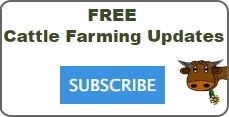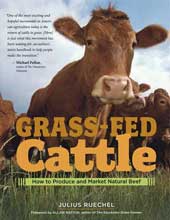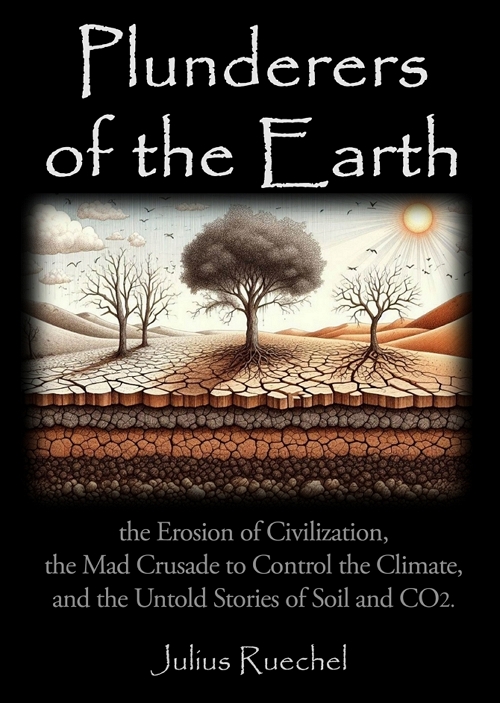The Grass-Fed Solution to Cattle Feeding
The Seven Core Rules of Successful Grazing Management
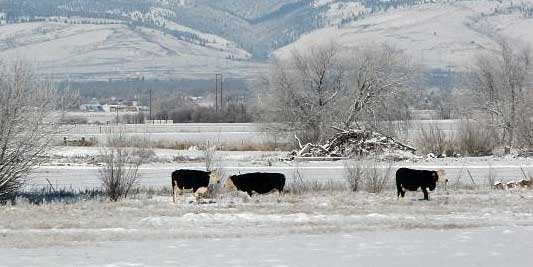
Image Credit: Karyn Christner, Flickr, CC BY 2.0
Cattle feeding causes the bulk of your beef production expenses. Pasture is much, MUCH cheaper than hay, silage, or any other stored feed ration. The longer you keep your cattle grazing, the lower your production costs will be.
Feeding cattle on hay, silage, or grain may at first glance seem like a tidy feed solution for the winter months. But these cattle feed rations come at a great cost. Fertilizer, harvesting equipment, manure management, feed storage and transport equipment, and the list goes on and on. And that's before even beginning to count the costs related to maintaining the health of your cattle in confined feed pens.
But there is low-cost solution to cattle feeding: Learn how to extend your rotational grazing season through the winter months, even when the pastures are covered by deep snow.
With a little bit of planning and preparation, you can use your pastures to offset most or even all of your cattle feeding costs.
Grass that you don't harvest during the growing season can be turned into excellent winter grazing by learning how to prepare your pastures for winter grazing so that the grass left over at the end of the growing season is good quality forage. You also need to adopt winter grazing strategies that will allow you to successfully continue your pasture rotation after the growing season ends, even through deep snow. And you need to prepare your cattle herd for winter grazing so that they can safely continue to graze after the growing season ends.
When you restructure your cattle business so you can let your cattle harvest the winter pastures themselves, you can eliminate an entire fleet of farm equipment (which can be used to buy more cattle and more pasture). You will free up a huge amount of time and save an enormous amount of equipment maintenance and operating costs. And you will dramatically improve the health, fertility, and management efficiency of your cattle herd by keeping them out of confined feed pens during the winter months.
Every extra day on pasture saves another day of expensive cattle feeding costs.
How to use winter grazing to replace the costs of cattle feeding
The vast majority of beef production costs are caused by cattle feeding:
- buying and maintaining harvest and cattle feeding equipment,
- harvesting (or buying) feed,
- storing feed,
- transporting cattle feed rations to the cattle during the winter to feed them,
- building and maintaining cattle feeding areas,
- managing manure and waste-water in feed areas,
- treating the health issues that come up when cattle are confined to feed areas.
These costs do not apply as long as your cattle are on pasture.
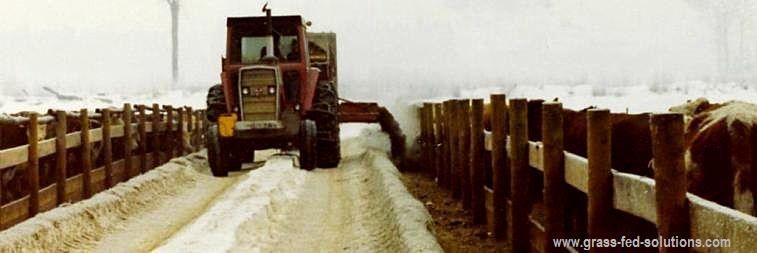 Winter in a conventional cattle feeding system. Consider all the capital tied up in this feed system (equipment, fences, feedlot construction) that could buy more land and more cattle if the business is restructured to keep the cattle grazing on winter pasture. |
Let's explore the costs related to cattle feeding in a little more detail because it will illustrate why any farmer that learns how to replace stored feeds with an winter grazing program immediately has a HUGE cost advantage:
Feed costs:
Stored forages like hay, silage, or other feed crops need be harvested, transported, stored, and fed. This requires an enormous investment into fuel, maintenance, and labor. But give a cow access to a decent pasture so she can continue grazing deep into the winter and she'll do all that for free. Learn the skill of winter grazing and you free up HUGE amounts of capital and time!
Pasture is the cheapest feed source around. It grows on its own and doesn't need to be replanted each year. You may choose to add a little fertilizer or irrigation, but that's about where the external costs end. The cattle do all the harvesting free of charge. It'll cost you 20 minutes a day to move your herd's pasture fence to let them into the next grazing rotation. Compare that to the hours sitting on a tractor during the harvest season and the many hours every day in the winter to bring all that forage back out to your cattle herd.
Equipment:
Grazing cattle don't require a fleet of equipment. Just an ATV to run out to the pasture to move your portable fence lines and check on the cattle and perhaps a livestock hauler to take animals to the slaughterhouse or auction yard, but even the livestock hauling is often best hired out, as needed, to professional trucking companies.
As long as you are grazing cattle, you have no need for tractors, harvest equipment, feed wagons, manure spreaders, tillage equipment, hay sheds, or expensive feed bunks. And you also save all the maintenance costs and time normally associated with owning and operating all this equipment. That's an enormous amount of capital investment and ongoing production costs that simply evaporate when you re-design your beef production strategy to allow you to keep your cattle on pasture and out of a feed yard during the winter.
Fertilizer and manure:
Grazing cattle in a daily pasture rotation will spread their manure fairly evenly around the pasture, requiring no further manure handling. Instead of being a liability, that manure (and the valuable nitrogen in the cattle urine) is immediately accessible to the soil and plants as a source of fertilizer, thus offsetting a large percentage of your fertilizer needs. Daily pasture moves ensure that the manure will be spread evenly without you needing to lift a finger.
Cattle health costs:
Then there are the health costs related to confining cattle into feed areas where they are constantly exposed to high loads of manure, which transmit diseases and are a breeding ground for flies. Pneumonia and other respiratory diseases, digestive disorders, and pink eye are among the most common diseases faced by cattle kept in feed pens, though the list certainly doesn't stop there.
Constantly walking or standing around on wet manure-covered ground is also very hard on cattle feet. The hooves of both adults and calves are softened by the moisture and acidity from the manure. Any injury to the feet, or simply from the breakdown of tissue caused by constantly standing in wet acidic manure, allows bacteria to enter the foot and cause infection.
Clearing the manure out with a front-end loader and providing straw or sawdust bedding sites is yet another expense and can only reduce disease pressure so much - the bacteria have been introduced into the soil and are an ever-present danger.
In a daily pasture rotation you simply don't get large concentrations of manure that build up in a concentrated area so bacteria are quickly destroyed by sunlight and through contact with soil microbes that flourish in healthy pasture soils. And on pasture the cattle have much more space, which further reduces infectious disease transmission between individuals.
Cattle in a daily pasture rotation are therefore simply not exposed to the same level of disease pressures as cattle kept in feed pens. Whether the pasture is green and growing or frozen and covered by snow, there is always a clean patch of pasture to bed down on with each new day's grazing slice. Manure simply doesn't build up like it does in a feed pen. Flies hatching from manure pads are always many days behind the cattle in the grazing rotation. Fly eggs take many days to incubate before they hatch; by then the grazing rotation has long since moved on, which dramatically reduces the disease pressure caused by flies and fly-transmitted bacteria. Udders stay clean on fresh grass. And feet stay clean and dry in each day's fresh pasture slice.
Cattle health costs in a cow/calf herd:
All the aforementioned health issues are further compounded for cow/calf producers that calve outside of the growing season, in a feed pen instead of out on pasture.
Manure in feed areas must be actively managed (requiring equipment, fuel, and time) to keep it from building up. But even when properly managed, calves still get exposed to it on dirty udders, or by bedding down in mud puddles, or lick it off of contaminated bedding piles.
However, cow/calf producers who want to graze their cattle during the winter on frozen or dormant pastures necessarily need to reschedule their calving date to occur during the growing season, in sync with wild grazing species like the deer, moose, and antelope that also calve in late spring or early summer, several weeks AFTER the pastures are already tall and lush. This means that calving happens on pasture, which automatically eliminates the bulk of the calving problems that producers struggle with then they calve during the cattle feeding season.
Simply avoiding the manure and bacteria loads of confinement feed areas is one of the biggest reasons why calves that are born on pasture only face a microscopic fraction of the scours, coccidiosis, pneumonia, and other diseases that plague calves born in confinement feed pens or specially-dedicated calving areas.
The survival rate of calves born on pasture during the growing season is significantly higher, at only a fraction of the labour and veterinary costs (and without the huge capital investment into barns, quarantine areas, warming pens, etc), compared with calves born in a feed area. More calves surviving and lower costs automatically means more money in your pocket at the end of the year.
You can learn more about calving on pasture by reading about the benefits of calving on pasture and the article about how to manage your calving season in a daily pasture rotation.
 Winter grazing through a fresh slice of snow-covered pasture... the simpler and cheaper winter cattle feeding solution.
Winter grazing through a fresh slice of snow-covered pasture... the simpler and cheaper winter cattle feeding solution.The grass-fed solution to high feed costs.
Despite the obvious advantages of keeping cattle on pasture whenever and wherever possible, many farmers seem to forget this pasture advantage. Instead they harvest mountains of hay or silage and then run out of pasture long before the snow flies, only to feed out the very same hay that their cattle would have happily harvested for free directly from the pasture.
Considering how often winter grazing is overlooked by cattle producers, it is worthwhile highlighting this important grass-fed pasture-production advantage by making it a firm grazing rule:
Grazing Rule #5:
Pasture is much cheaper than stored feed. The longer you continue to graze your cattle after the end of the growing season, the lower your beef production costs will be.
Extending your grazing season means making some adjustments to your beef production strategy, including preparing your cattle for a winter grazing program.
You will also need to learn how to create high-quality winter pastures that your cattle can continue to graze deep into the winter months. And you will need to learn the winter grazing strategies that will keep your cattle grazing deep into the winter, even through deep snow, without affecting their health and fertility.
The secret to being profitable in the grass-fed beef business is to adjust your beef production methods to minimize your cattle feeding costs.
How to make the switch to grass-fed beef production and extended season grazing:
It only takes a few new skills and a few adjustments to your production strategies and you'll be ready to make the switch to grass-fed production methods and extended season grazing.
Learn how to create winter pastures that are suitable for grazing during the winter, even through deep snow.
Build an electric fence grid that allows you to effectively graze during the winter.
If you have a cow/calf operation, shift your calving season into the growing season in order to reduce your cattle's nutritional needs during the winter. This will help your cow/calf herd continue to graze long into the winter with only minimal supplementation.
Shift your annual production calendar (calving, breeding, weaning, cattle sales dates, and/or grass-finishing and slaughter dates) to fit with the seasonal nature of a grass-fed production cycle.
And learn the grazing strategies that will let you continue to graze through snow long after the end of the growing season.
With experience you will be able to extend your grazing season until you are able to graze year-round in almost any climate suited to agriculture in the world, with or without snow! However, it requires a rethink about how to manage pastures and a little bit of planning to prepare your pastures, cattle, and grazing skills.
Continue to the next article in the Core Grazing Rules series:
Preparing Pastures for Winter Grazing - (Grazing Rule # 6)
Learn how to create ideal winter pastures to continue grazing long after the growing season ends.
Related Articles:
- The Ideal Calving Date for Raising Cattle - How to choose the perfect calving season to fit your grazing program.
- Grazing Management Summary - a handy stripped-down reference list of the seven Core Grazing Rules that every grass-fed beef producer needs to know in their sleep.
(Disclosure: I get commissions for purchases made using Amazon links in my post.)
And when you're ready to start planning your cattle farm, check out my book: Grass-Fed Cattle: How to Produce and Market Natural Beef. Use the links below to explore my book and read reviews on Amazon:
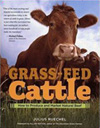
- Amazon.com#CommissionsEarned
- Amazon.ca#CommissionsEarned
- Amazon.co.uk#CommissionsEarned

